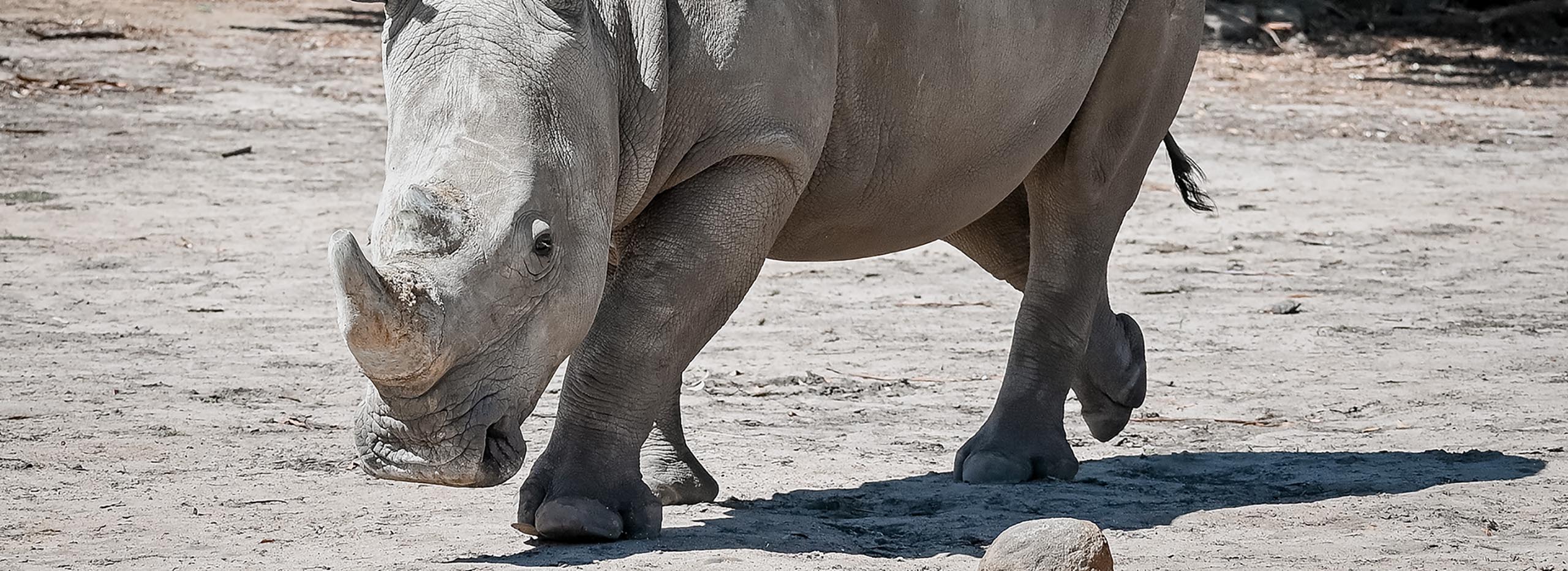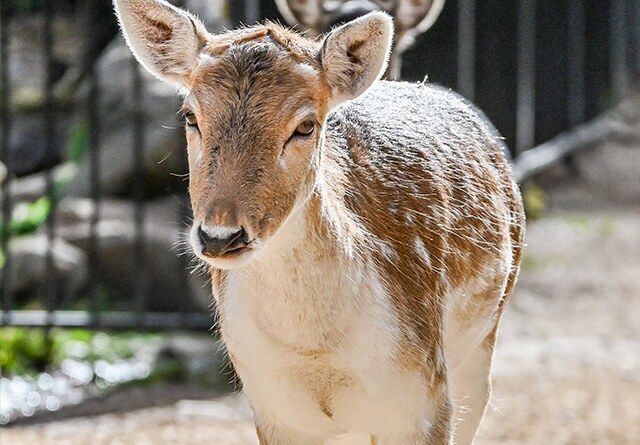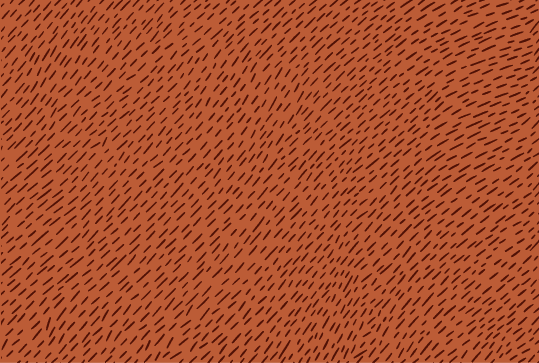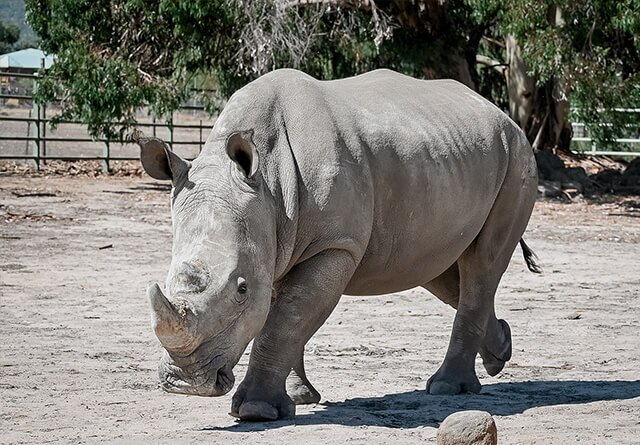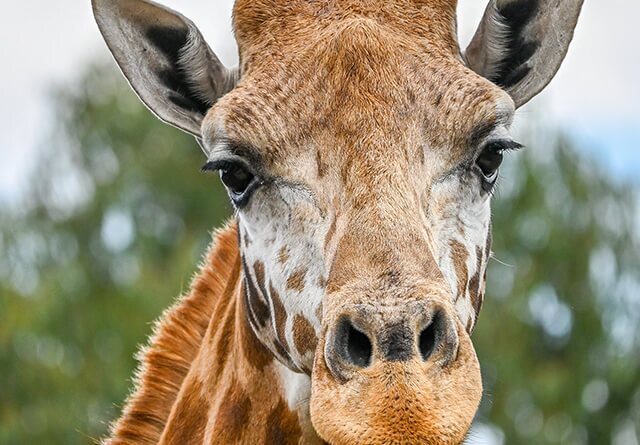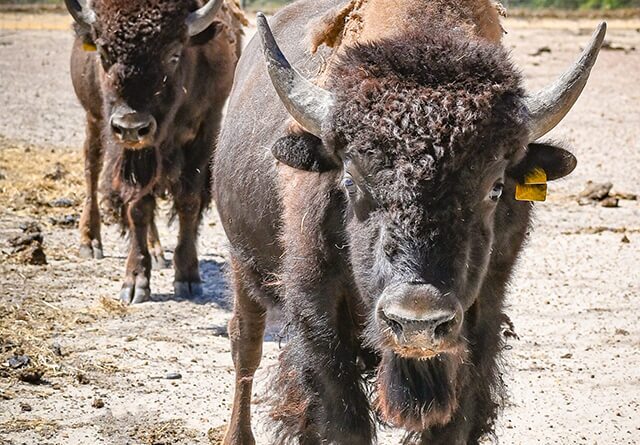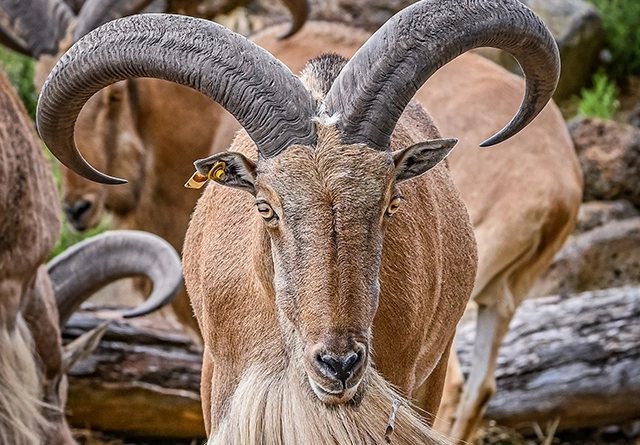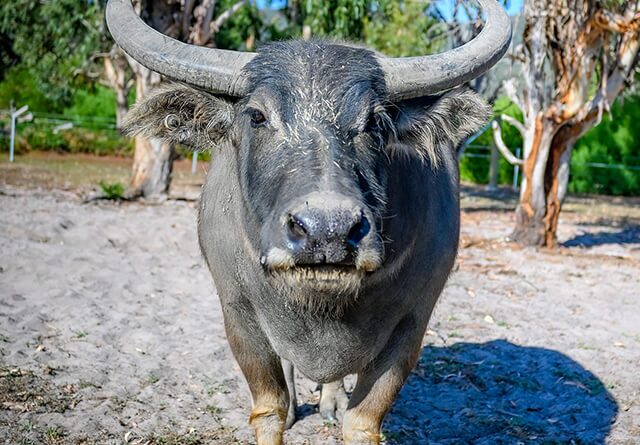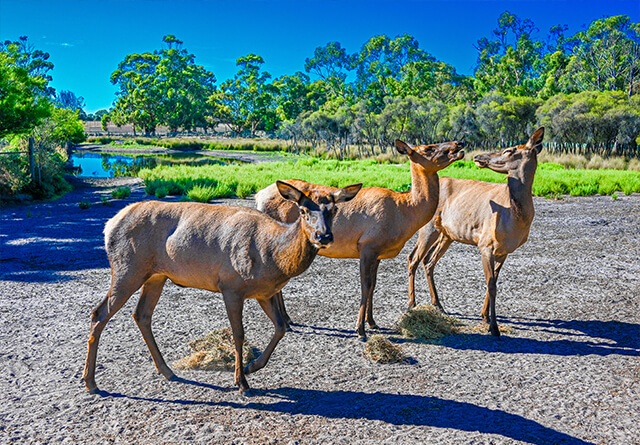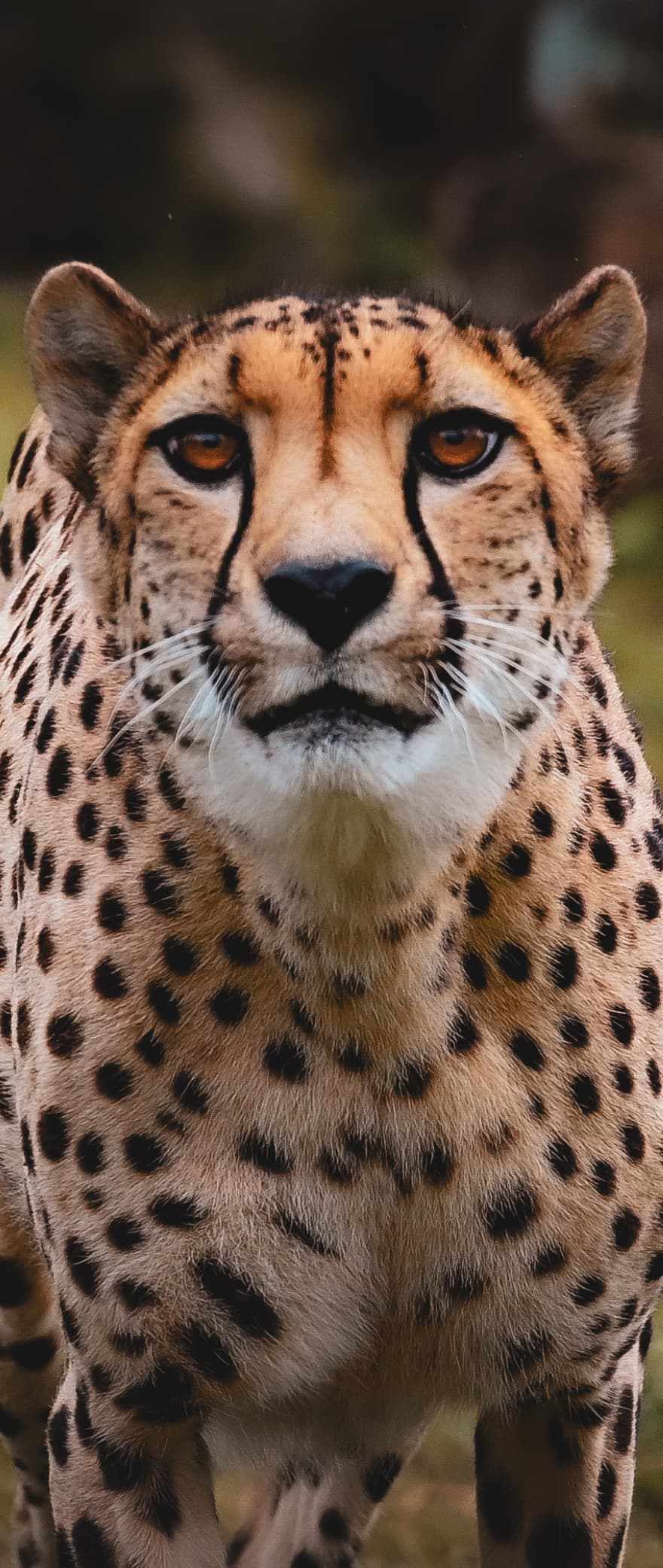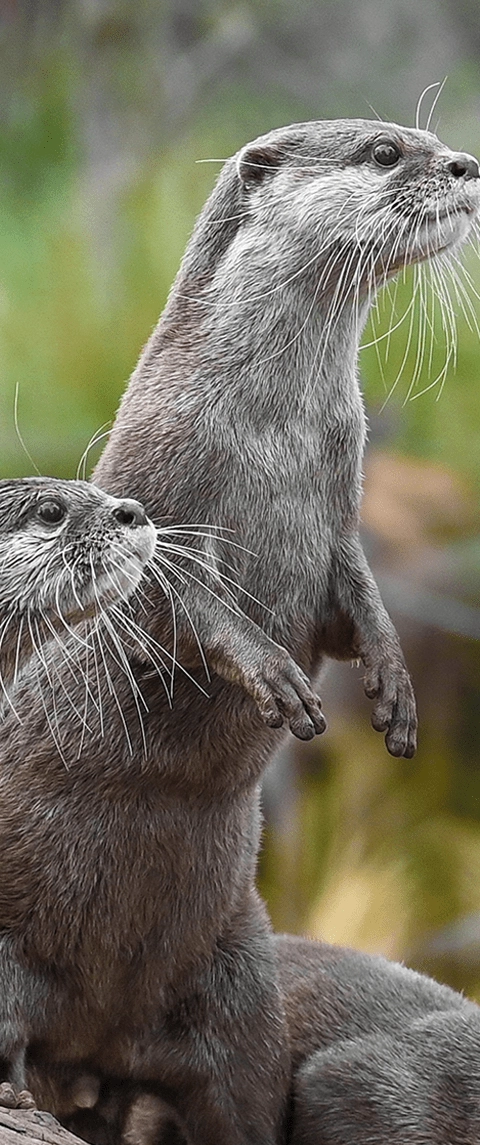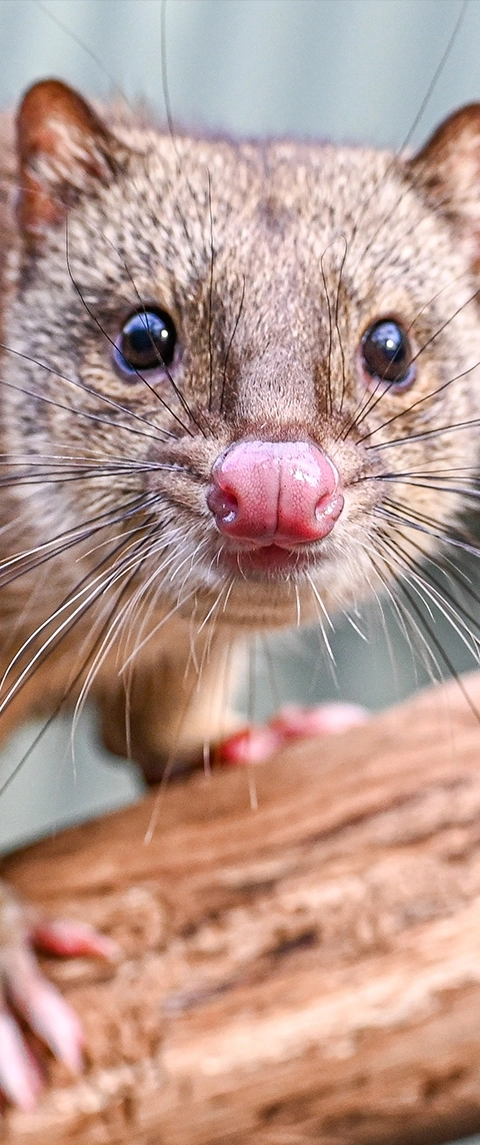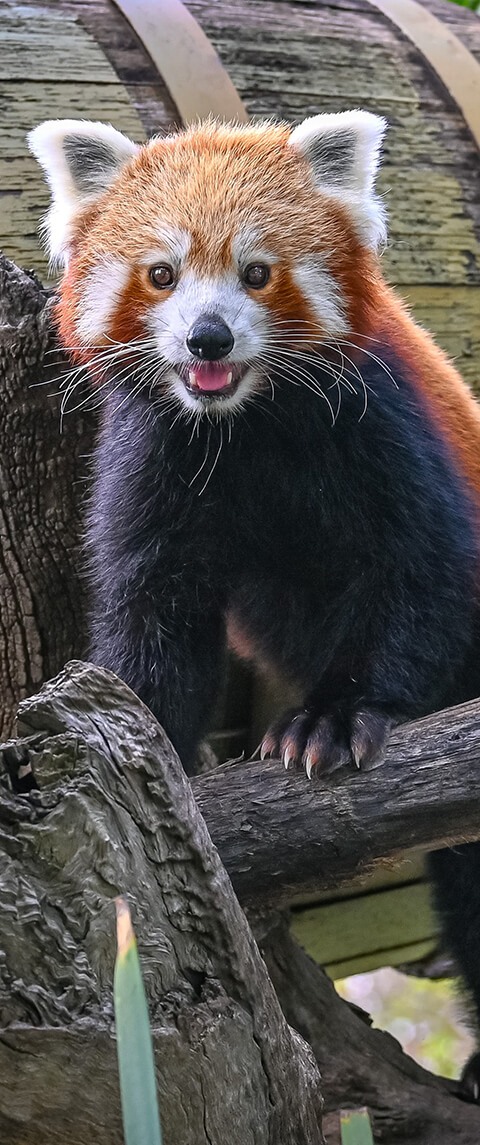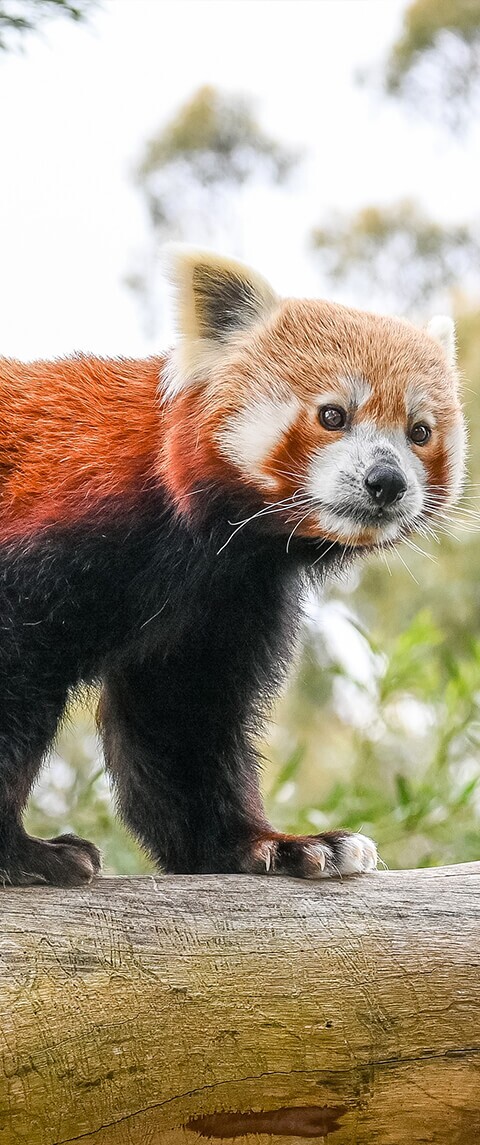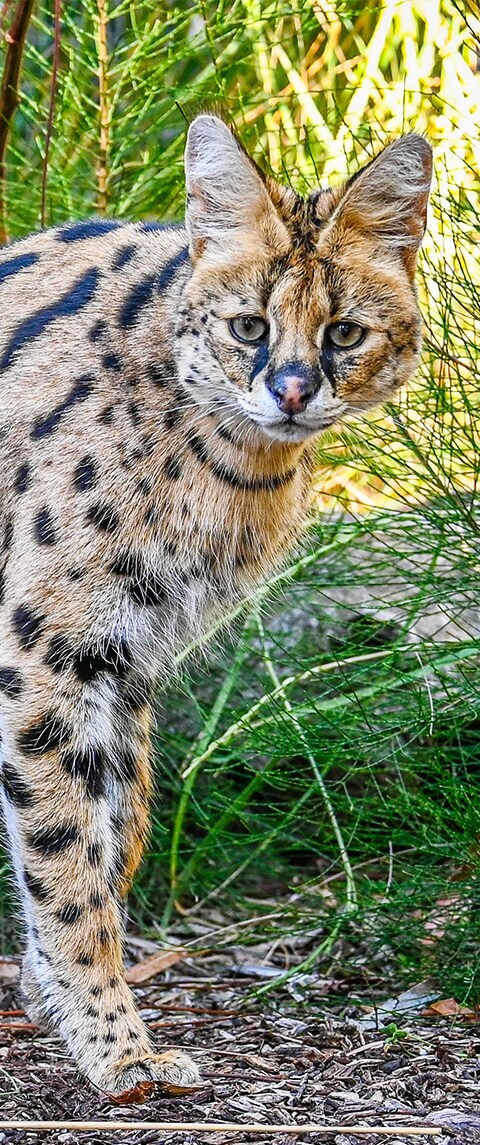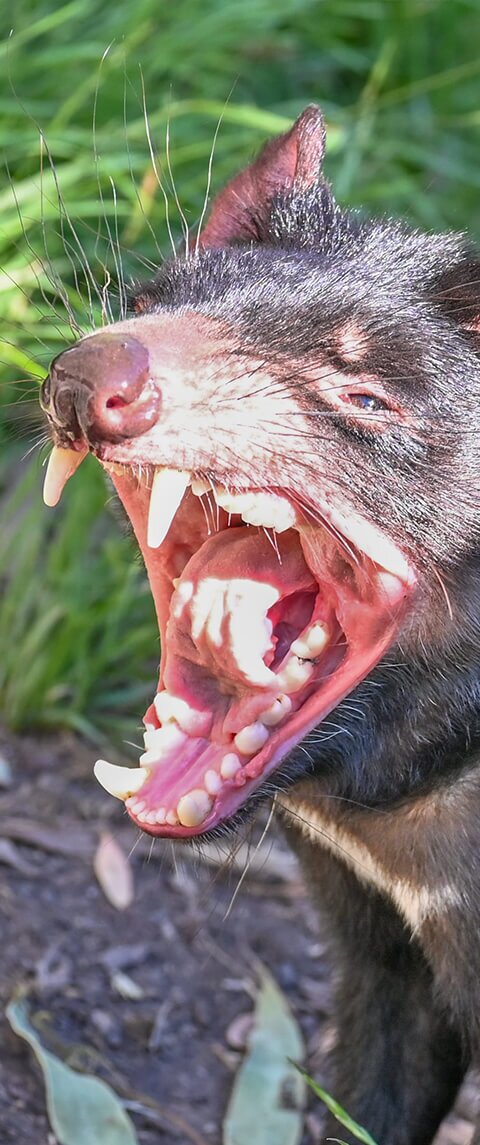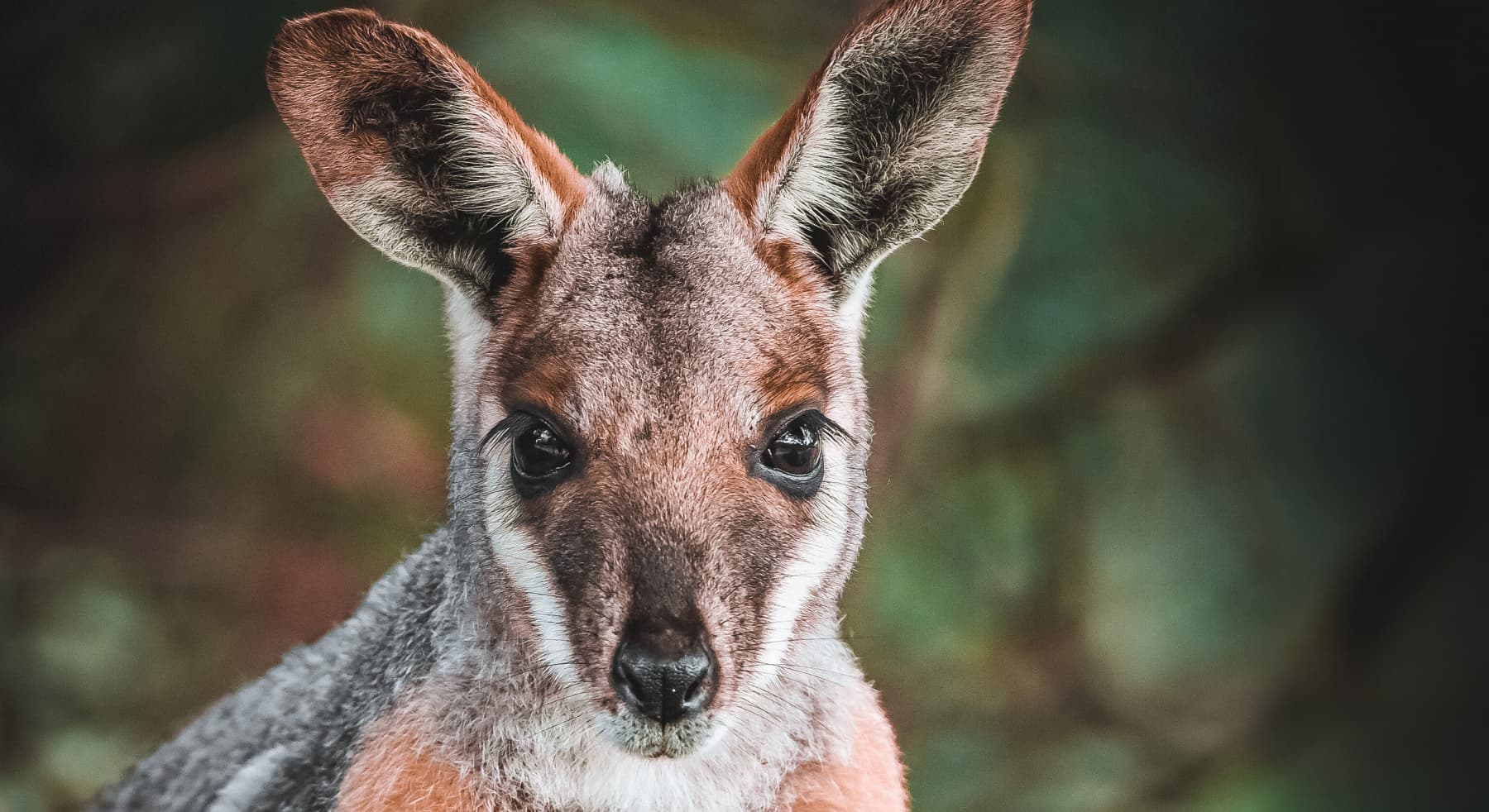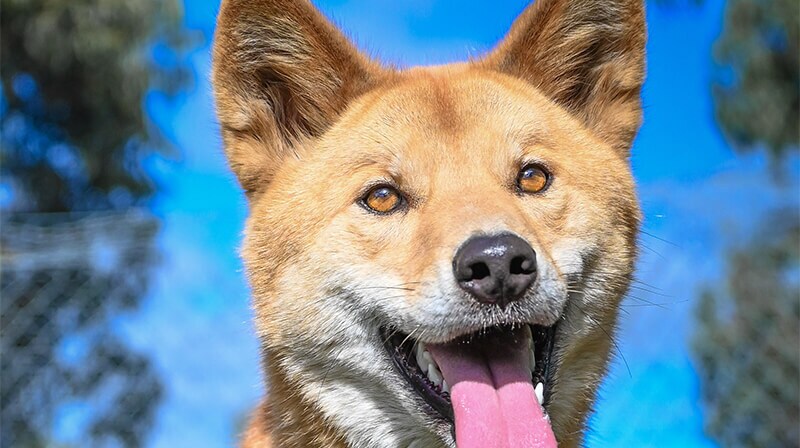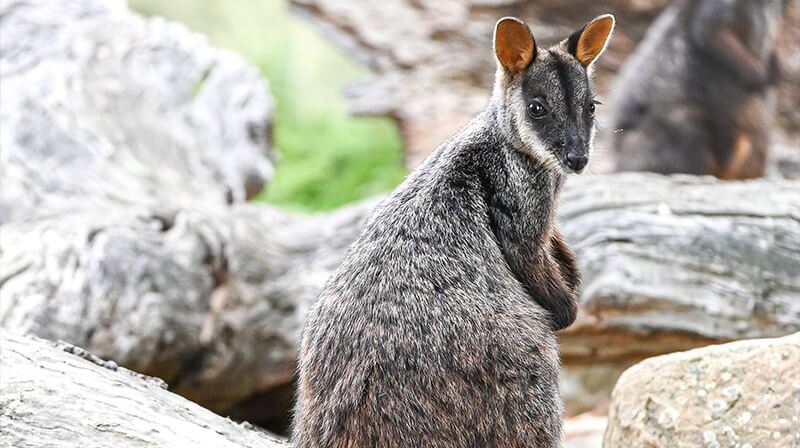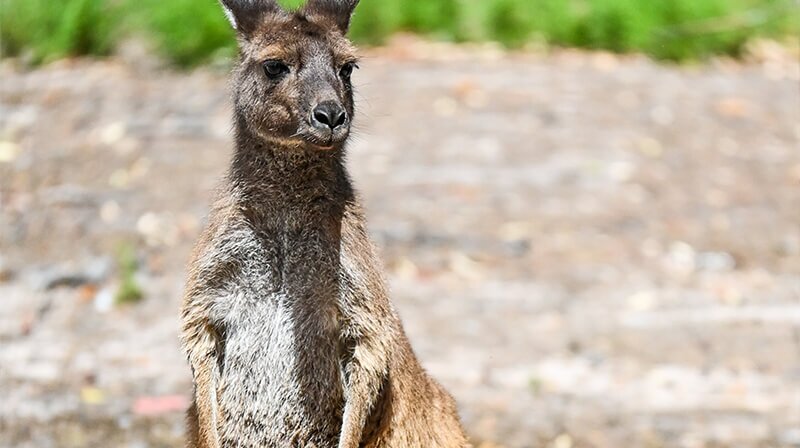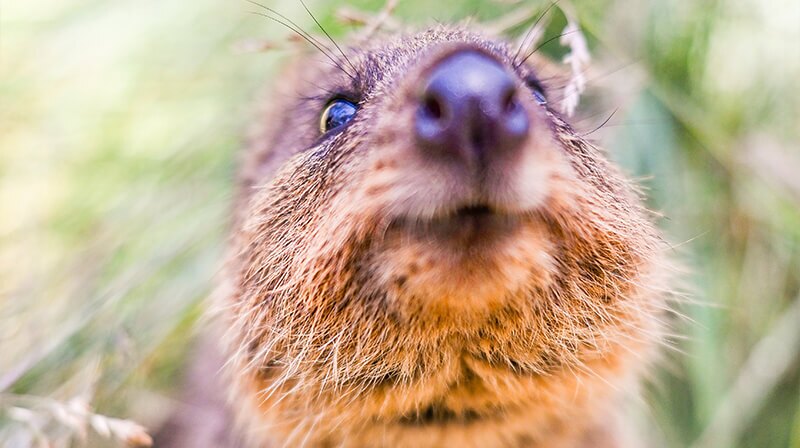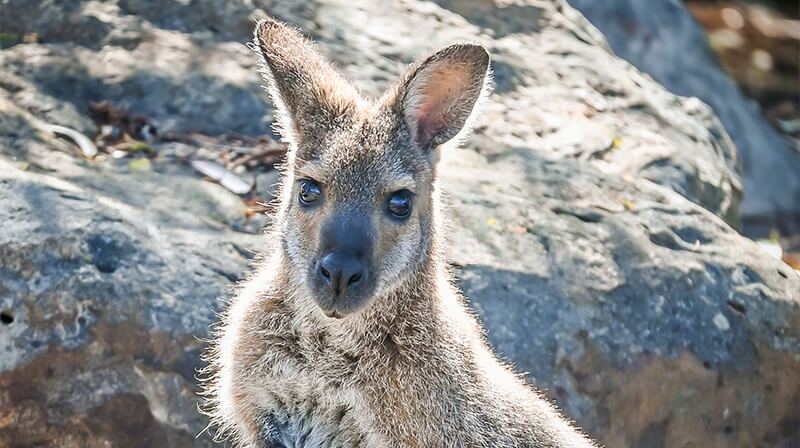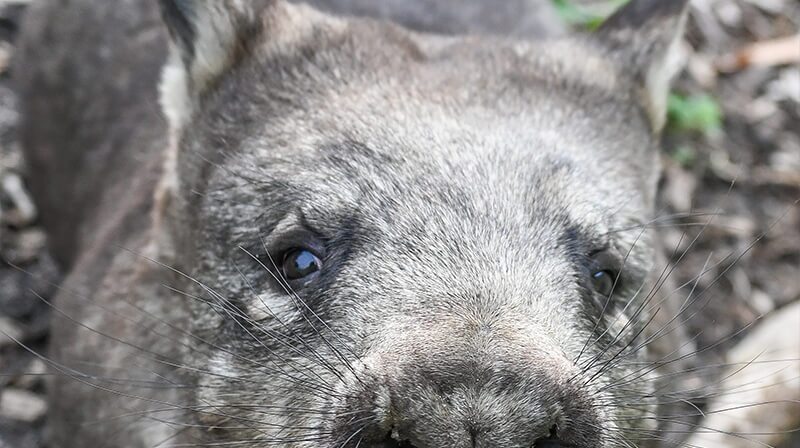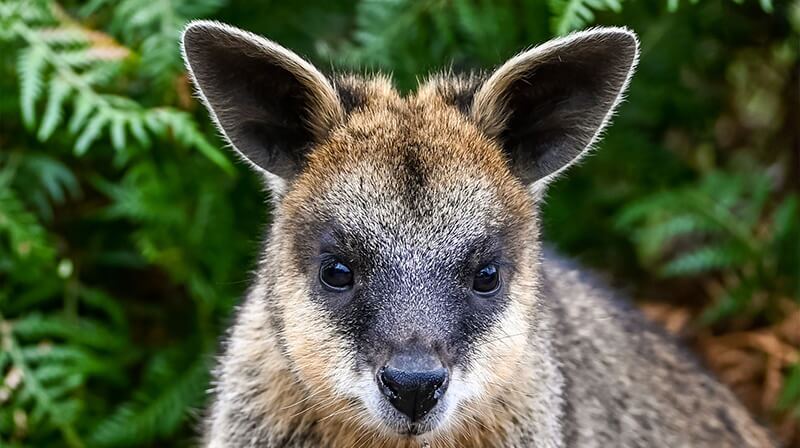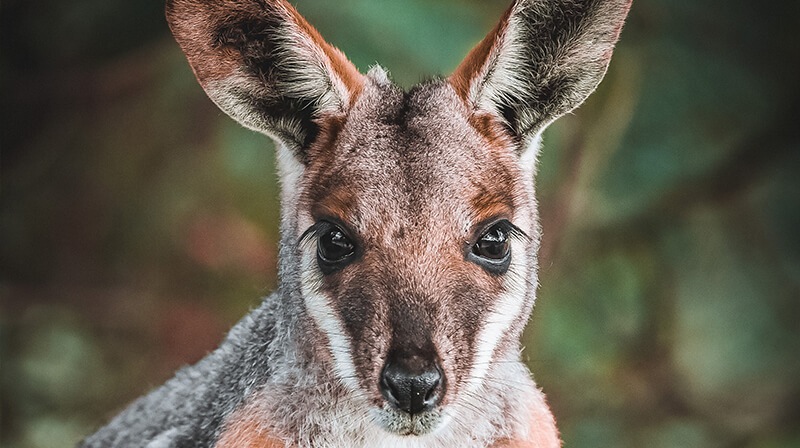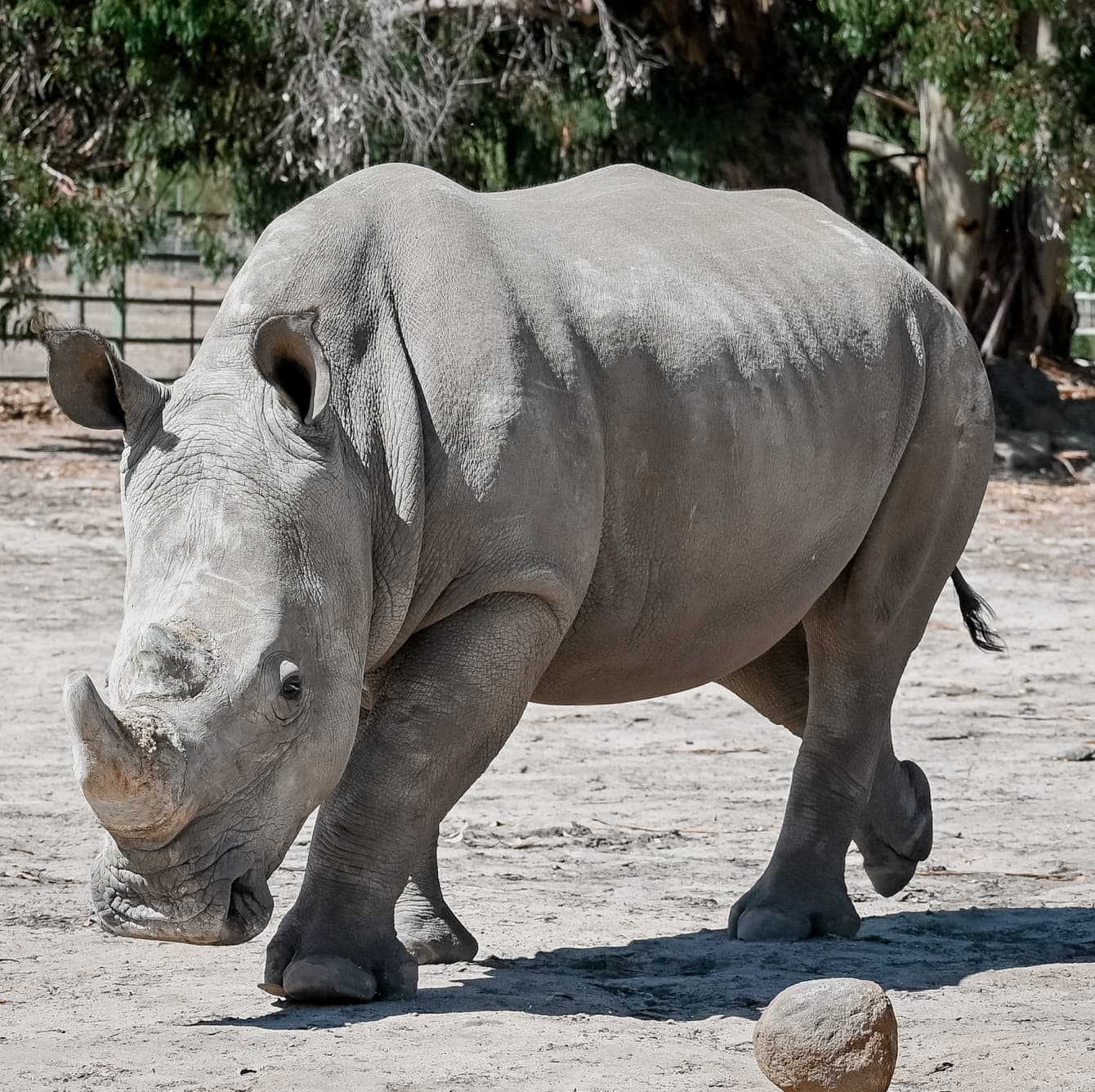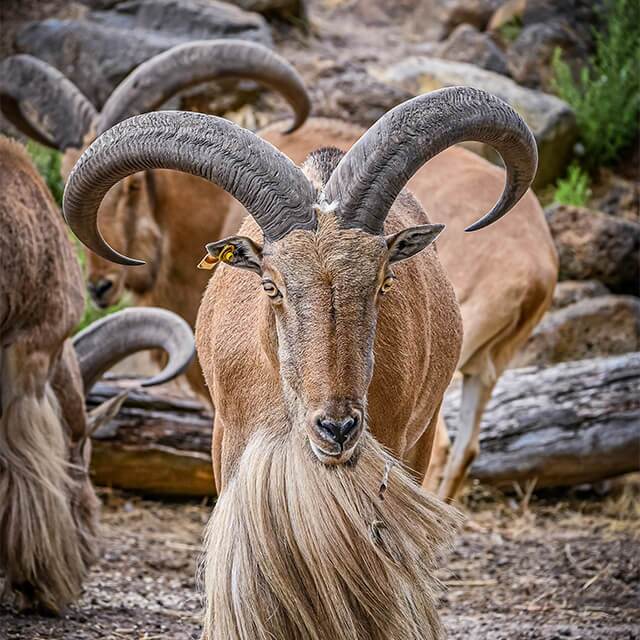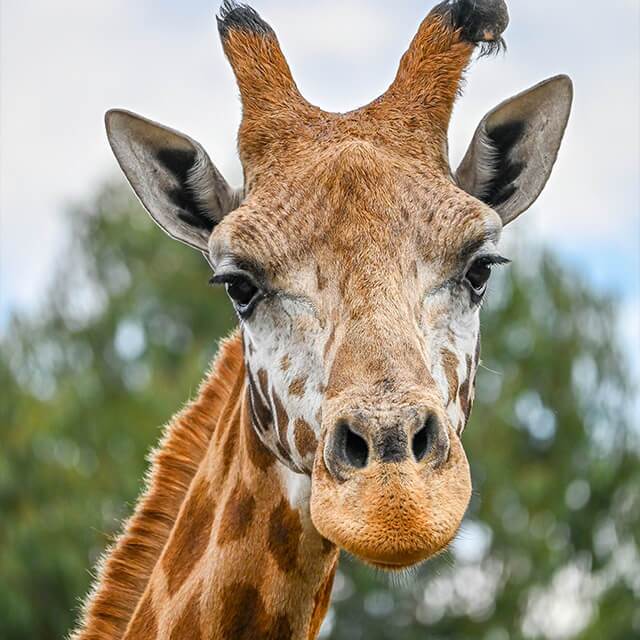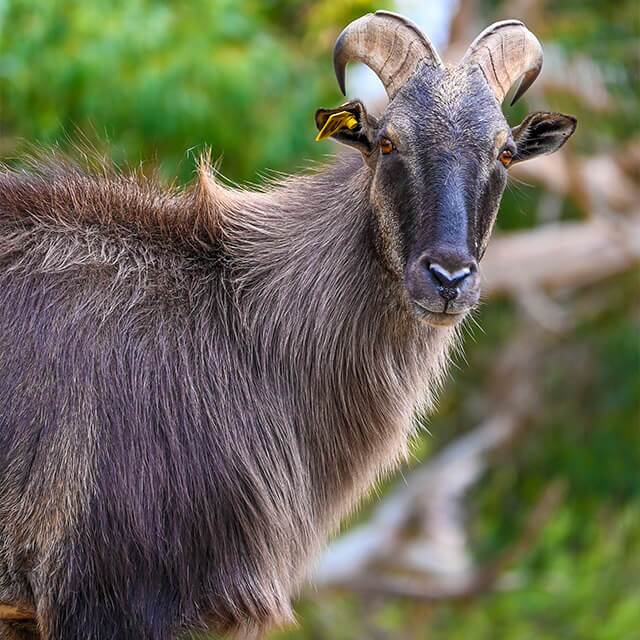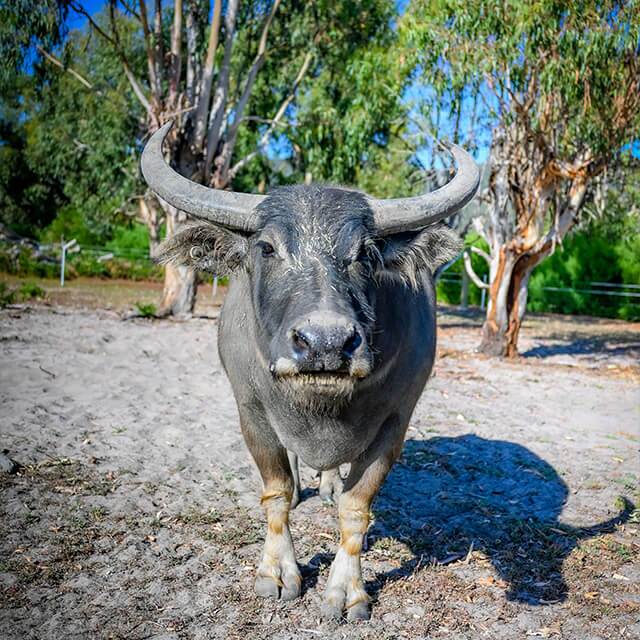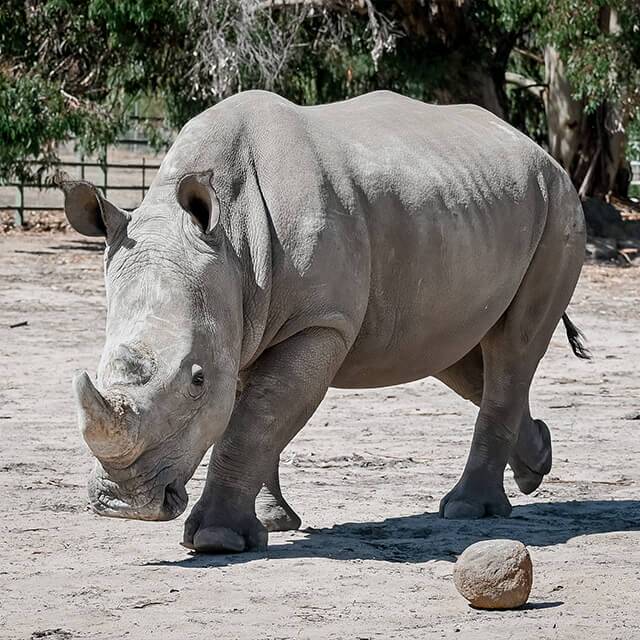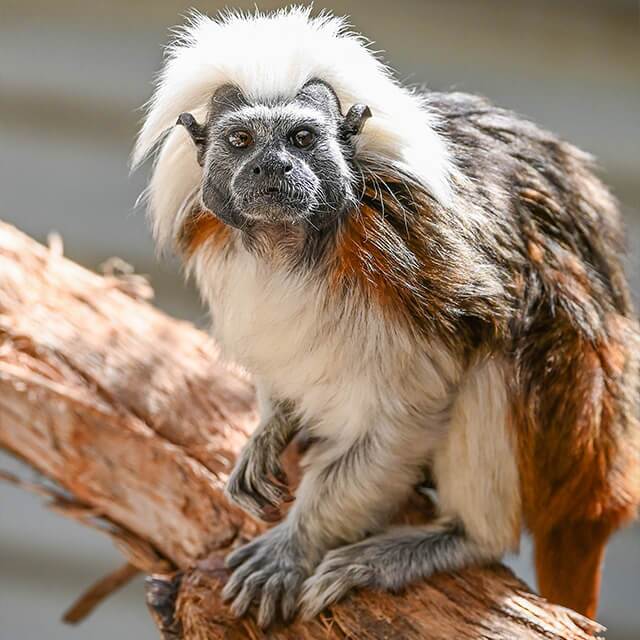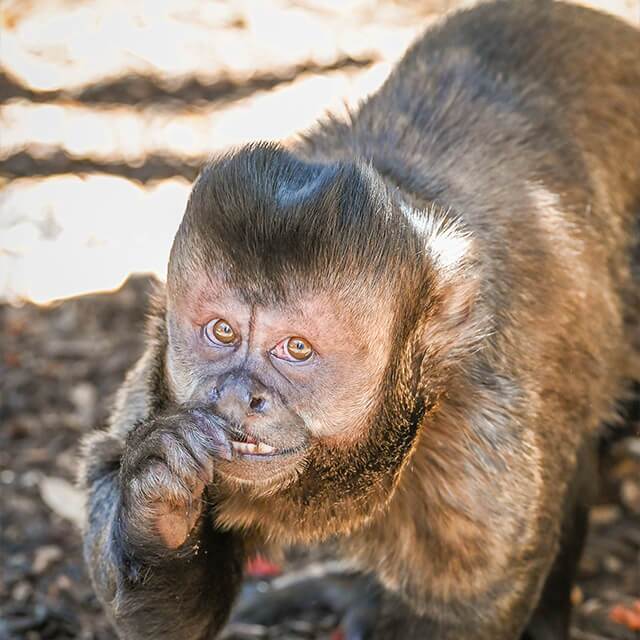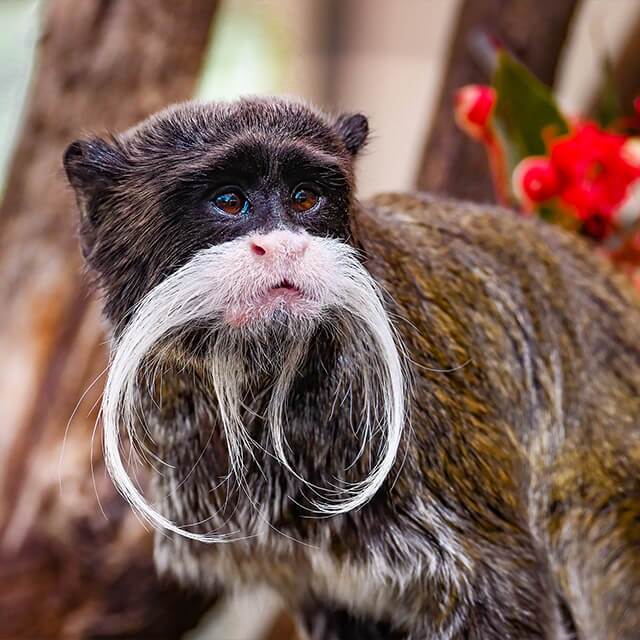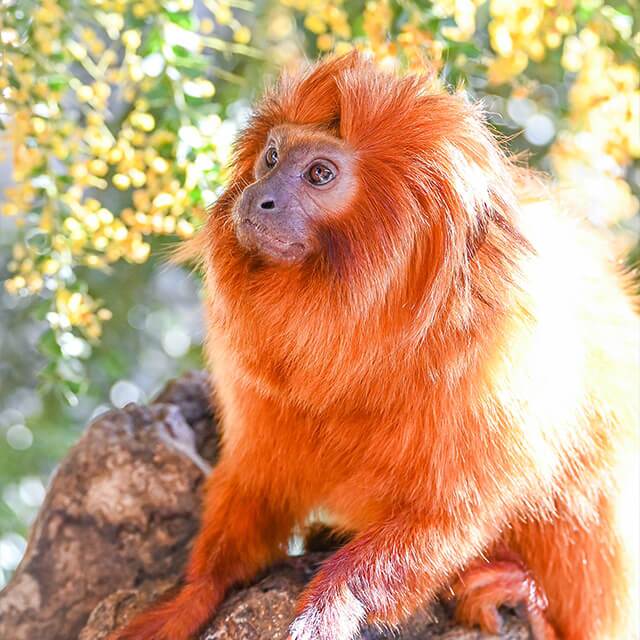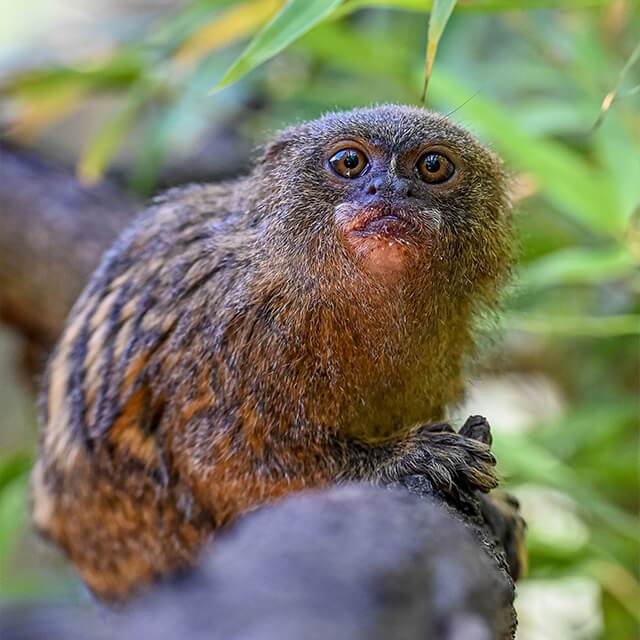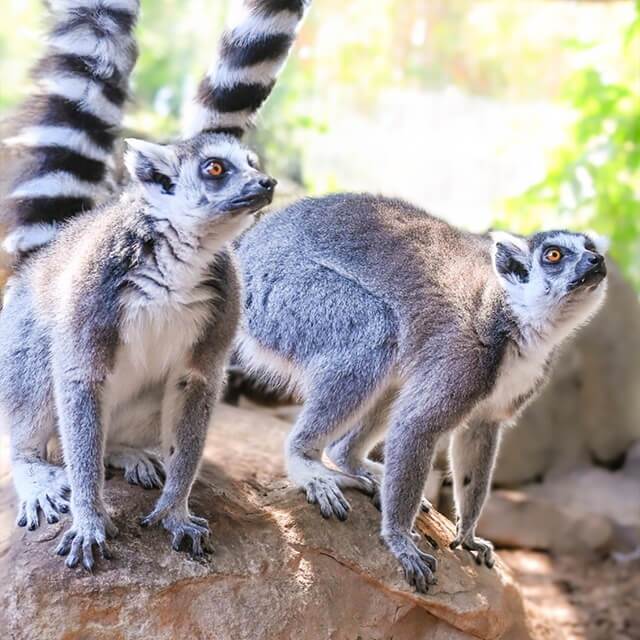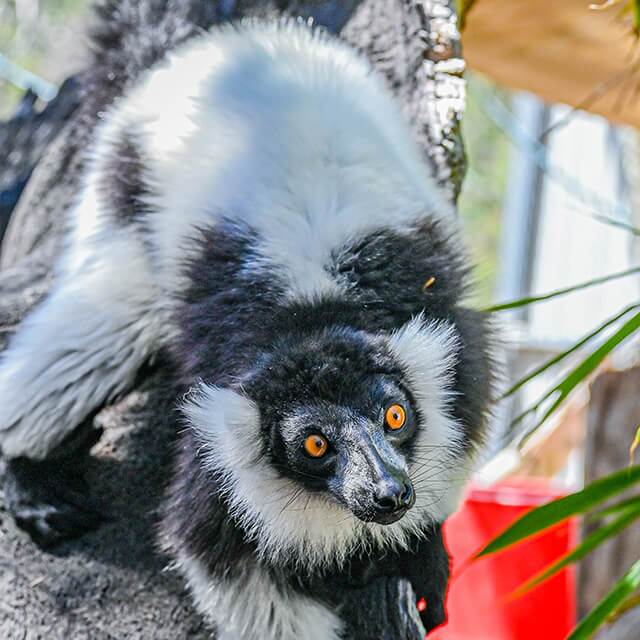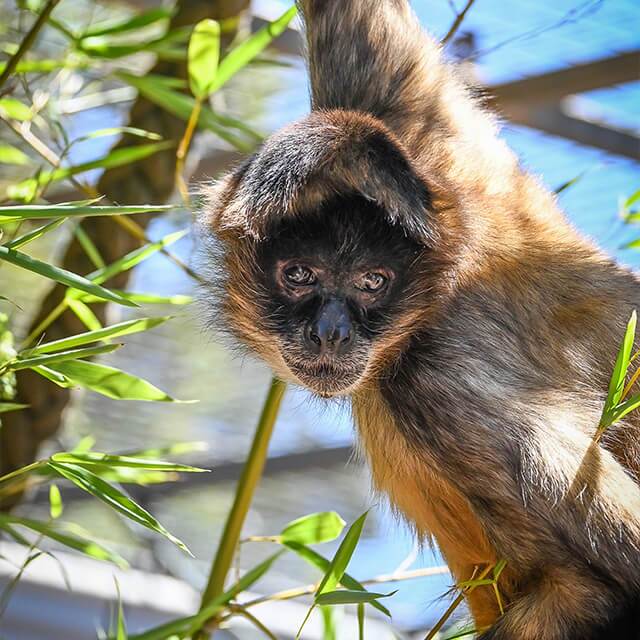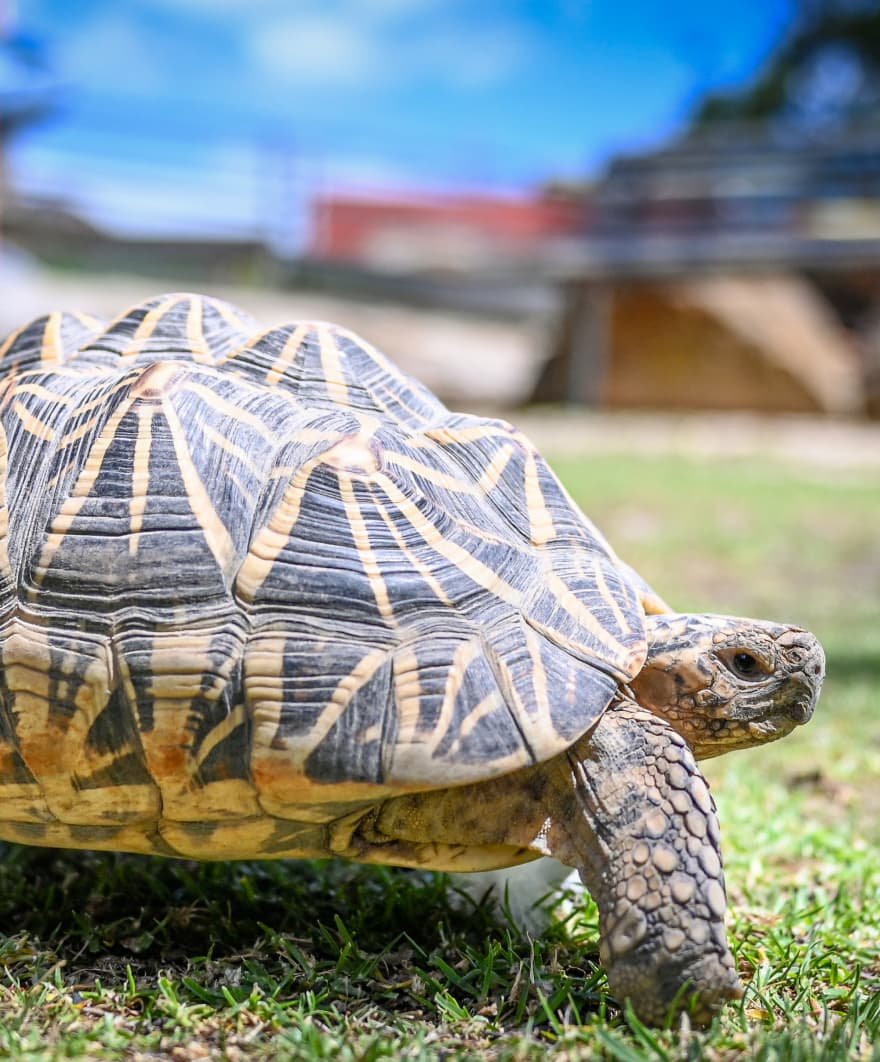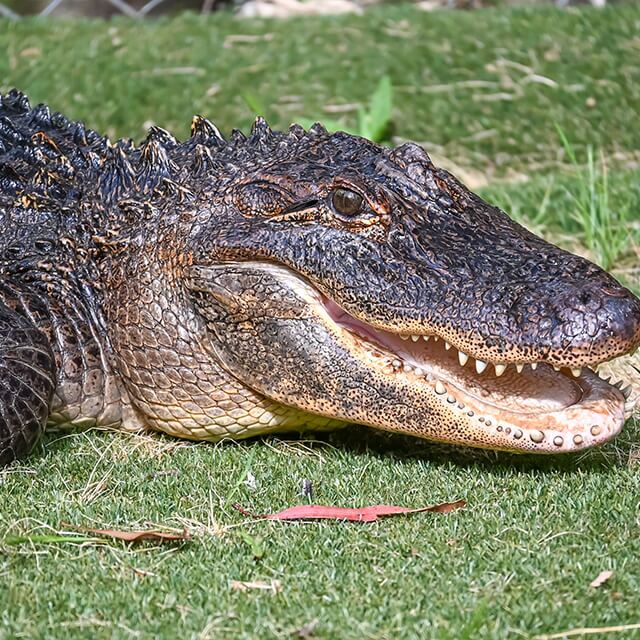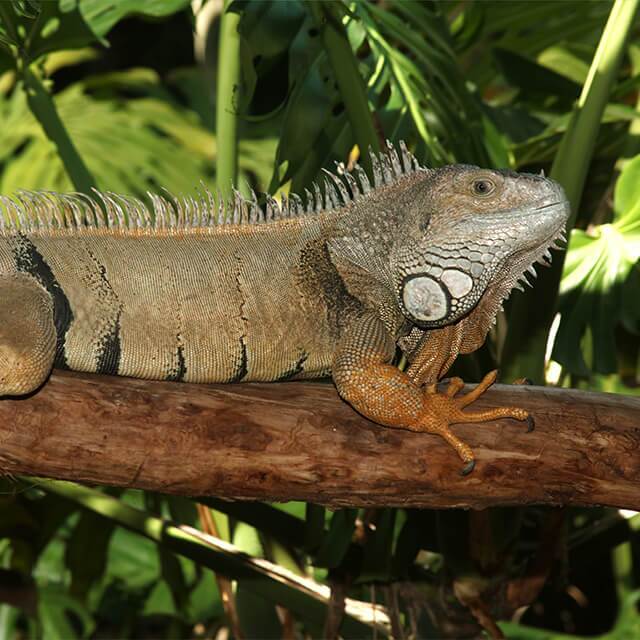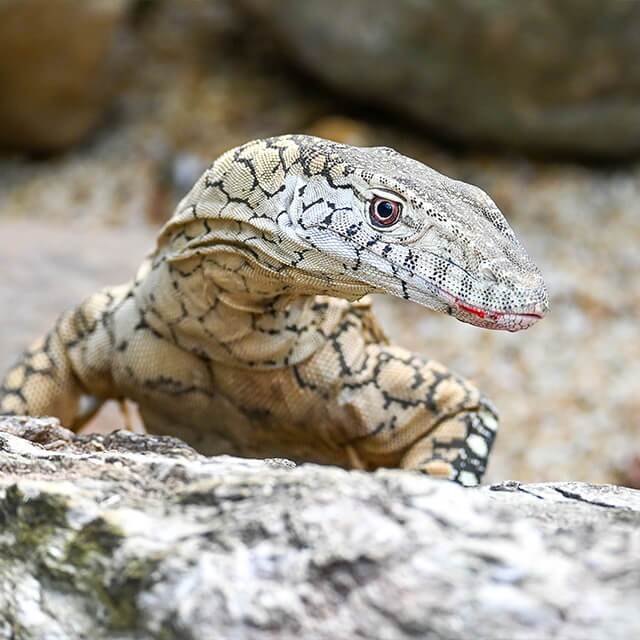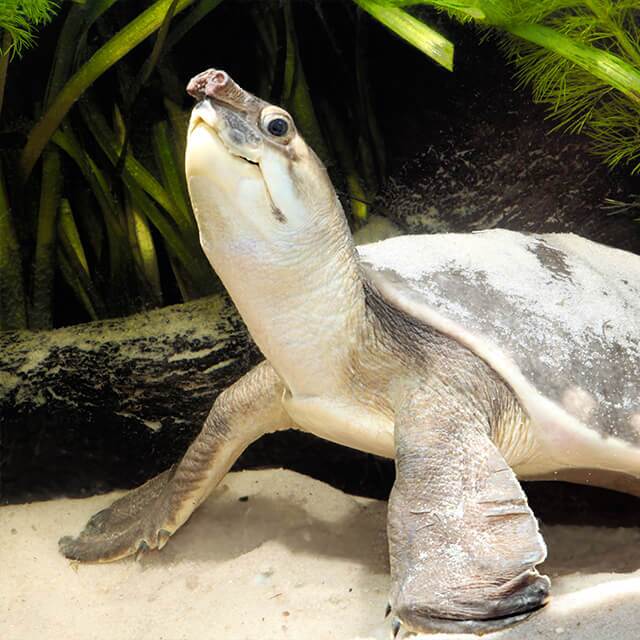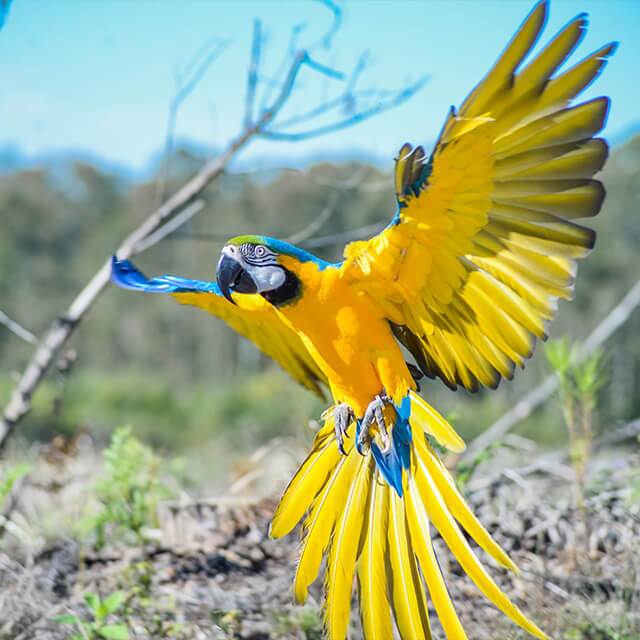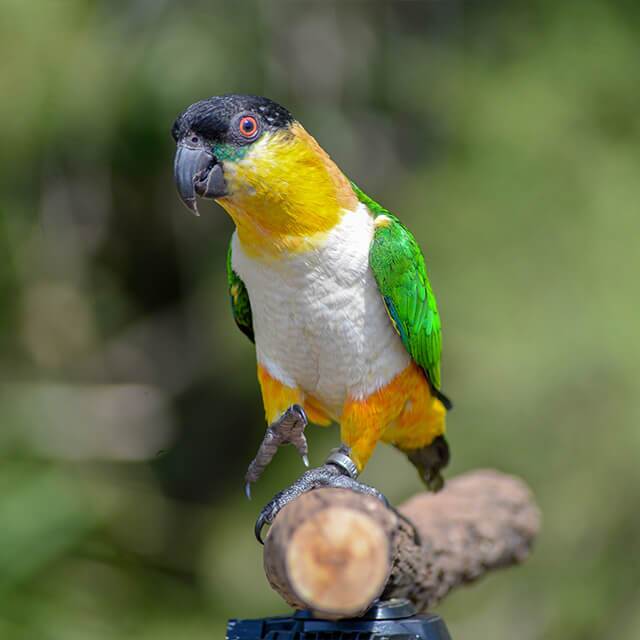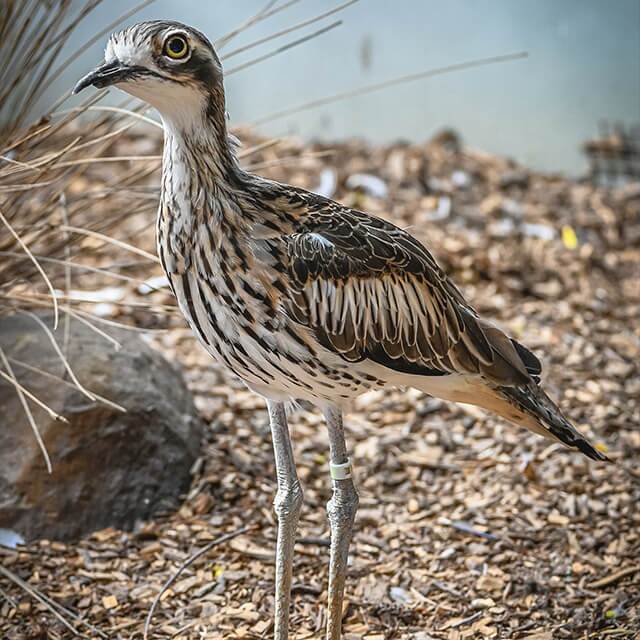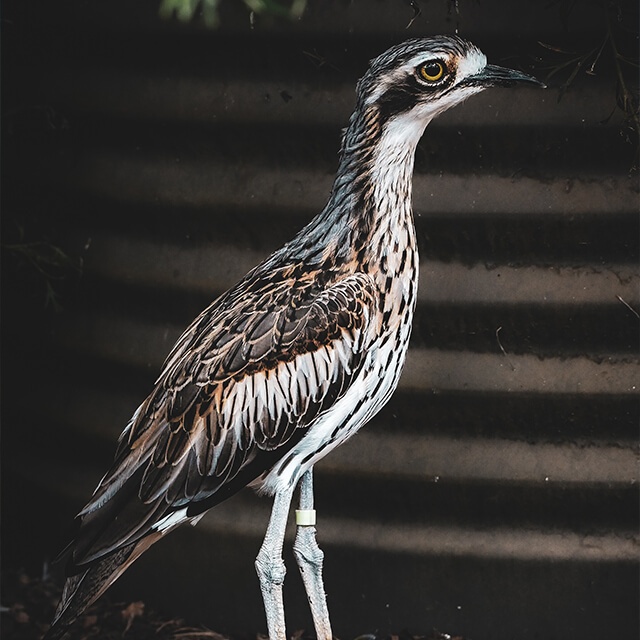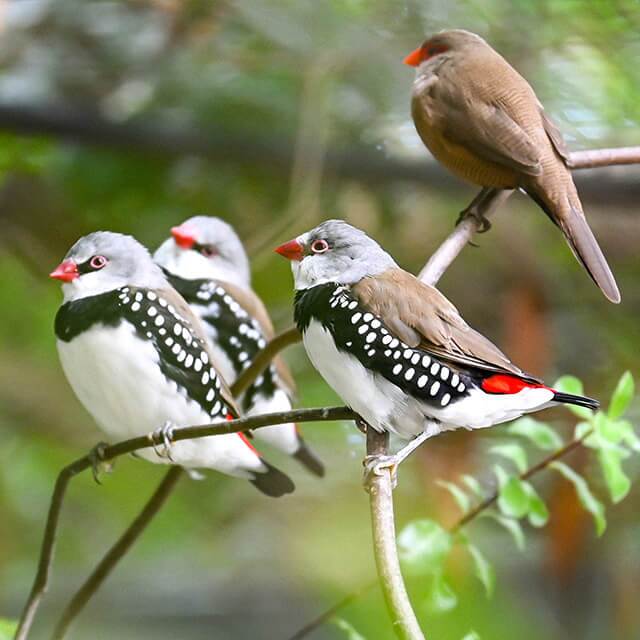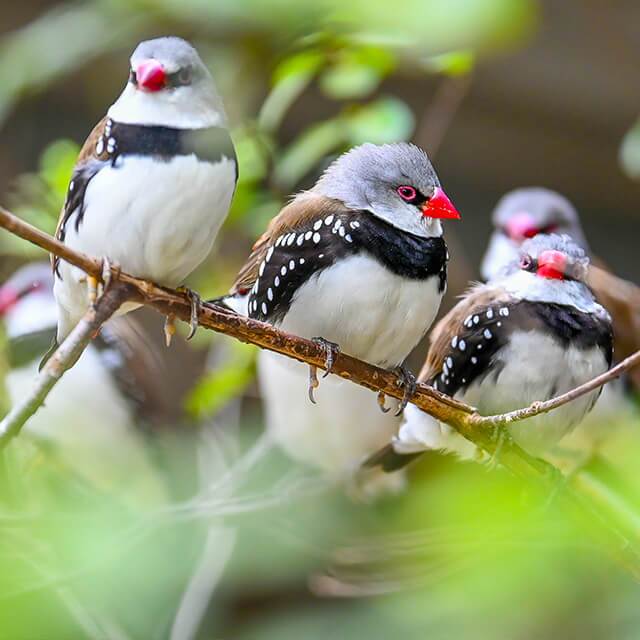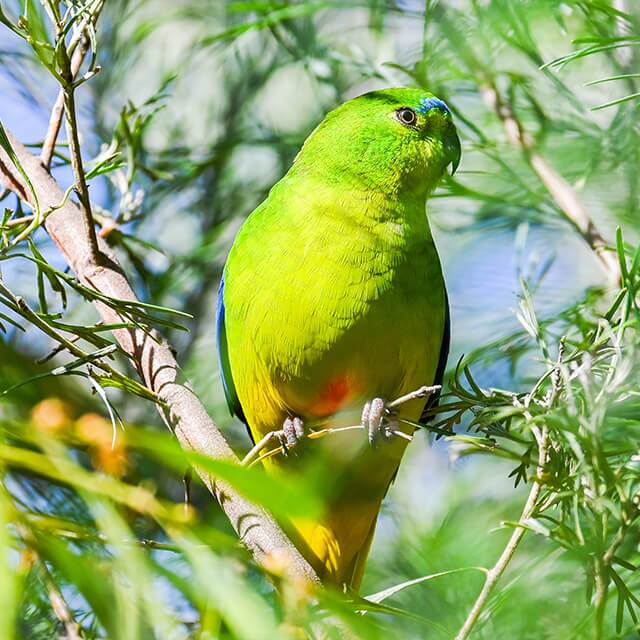The hoofstock team look after all the needs of our largest animals which include a two-ton rhinoceros, one-ton American bison and half a ton Elk antelope. Our up-close rhino encounter is a great opportunity to give our rhino a good rub which enriches their day.


Follow us @hallsgapzoo
Today is also International Tasmanian Devil Day.
We have 3 devils here at Halls Gap Zoo and you may see our new boys Messi and Knuckles out exploring their enclosure or Arti next door trying to suss out what the new boys are up to.
Messi and knuckles came from Aussie Ark who do an amazing job of breeding Tassie devils to help conserve this endangered species. In the wild devil populations have significantly reduced due to the Devil facial tumour disease, it is unfortunately a contagious cancer which is spread when they interact with each other primarily through biting but through breeding programs like Aussie Arks we are able to breed animals that are tumour free and have a healthy population of devils to conserve the species while scientists work on how to stop the disease spreading.
📸 keeper Darci

🐊🐊NEW ENCOUNTER🐊🐊 We are very excited to announce that we are now offering crocodile encounters where you can enter the croc pool and have a ride on Jugs. Some might say this is a once in a lifetime opportunity. Don’t worry we have safety at the forefront of our minds so riders must leave phones, jewellery, shoes and hats outside as to not give jugs a stomach ache.
Everyone gets to watch and at the same time we will also have one of our keepers doing a croc feed talk at the front of the exhibit.
Jugs can’t wait to meat you all!

Summer is over and we can slowly start to relax a little bit after such a stressful few months with the fires in the Grampians impacting the wildlife, the residents, visitors and all the surrounding businesses.
Now that the school holidays are almost here there is no better time to visit to show your support to the whole community the fires are gone the weather is beautiful the gift shop is stocked and all the animals are ready to welcome everyone for a busy school holidays we have lots planned from keeper talks, new encounters, Easter fun and even some animal birthday parties planned so lock in a date for a day trip or better yet come stay for a few nights to really soak in the Grampians and go on a hike, eat some ice cream, let someone else cook and clean the dishes for you and relax with a nice walk around the Zoo and book in to meet our friendly animals for an encounter you will remember-even the kids will go back to school remembering the meerkat they fed or the rhino they got to pat instead of telling their teacher they had McDonald’s for lunch one day.
Pre book for encounters via our website
Check out Parks Victoria website for hikes that are open within the National Park

✨✨✨FAST FACT FRIDAY✨✨✨
Today is all about the beautiful Emperor Tamarins 🥰
🐒 Females will usually give birth to twins and the whole family participate in raising the babies, they will carry them on their backs and pass them back to mum for a feed.
🐒 They live in family groups of around 15 animals
🐒 They have claws rather than nails and this adaptation allows them to cling to the trees
🐒Remember Monkeys are not pets and interacting with ‘cute’ monkey videos on social media contributes to the illegal pet trade.

🌟🌟Come and meet our baby wombat Sprout before he is wheeled away to his new home 🥹
Sprout is our very loveable and cheeky wombat and during an encounter you will get to pat him, watch him get the zoomies, take him for a little walk (unless the grass is especially delicious that day) and learn facts about all wombats and the 4 that call Halls Gap Zoo home. 🌟🌟
🔥 We are currently taking bookings till the end of school holidays.

✨✨FAST FACT FRIDAY✨✨
This week is all about Quokkas.
🌿 Quokkas are actually a species of Wallaby.
🌿They can go for up to a month without drinking water as they get most of their moisture requirement from the plants they eat.
🌿Quokkas can climb trees, believe it or not these guys can actually climb up to 2m to access some of their favourite leaves from trees.
Our little Quokka Ember is getting so big so quickly and even though she isn’t on display just yet you can book an encounter with her and get that perfect Quokka selfie and then feed her one of her favourite treats.
Visit the link below to book:
https://hallsgapzoo.com.au/encounters/

Week 5 of Fast Facts Friday, and we are looking up to our Giraffes. Literally!
🦒 Male giraffes are larger than females, weighing in at up to 1,900kg and often at a height of more than 5 meters tall.
🦒 They have a prehensile tongue which can extend 45cm.
🦒 Giraffe average 2 hours sleep a day, one of the shortest sleep requirements out of all mammals.
🦒 After 15 months of gestation, the female will give birth standing up. The young will drop to the floor and then stand, walk and feed within a few hours of being born. They are around 1.8m at birth and weigh 60-70kgs.
We have three giraffes at the Zoo who are all very observant. They know when someone is watching them.

Happy International Women’s Day! 🌸 Today, we celebrate the strength, resilience, and achievements of women everywhere, but especially the amazing women we have on our team here at the Zoo who work through rain, hail and shine lifting bales of hay, carrying heavy branches, drilling holes, getting covered in dirt and mud and so much more to make sure our animals are cared for. Keep shining and keep supporting one another 💖💖
#internationalwomensday #lifteachotherup

🍀We are open every day this long weekend 🍀
Come and meet our animals, all our encounters are available this weekend (unless already booked), grab an ice cold drink from our food van 🧋 and enjoy seeing our animals exploring their enclosures in the sunshine ☀️
#longweekend #longweekendadventures #melbourne #hallsgapzoo #nationalpark #hallsgap #grampiansnationalpark #visitmelbourne

Fast Fact Friday’s subject for week 4 is our Meerkats, which is infact a type of mongoose, rather than a type of cat.
😎 Meerkats are highly observant and will use their long tail like a tripod with their legs to maintain a steady stance and higher vantage point.
😎 They live in groups of up to 30 individuals, where they will take turns in each role within the mob. This includes caring for the young, foraging or hunting, and sentry duty (standing guard for predators such snakes or eagles).
😎 Meerkat eyes are surrounded by dark circles to reduce glare from the sun. These ‘natural sunglasses’ allow them to spot predators easier in the open desert.
😎 They dig ‘bolt holes’ which are safe trenches for them to escape to in emergencies when they are foraging.
Our cheeky boys love their peas and corn. Hence, we had to name one of them Peas and his Brother was dubbed Corn.

✨✨Have you ever wanted to meet and have a photo with the Queen of selfies? ✨✨
We are very excited to announce that encounters with Ember our little Quokka are starting this long weekend.
Come and meet Ember and as you are chatting to her keepers about all things Quokkas you can pat her and try to get the best Quokka selfie you can.
Please email frontdesk@hallsgapzoo.com.au to book in as we only have limited spots available.
Encounter time will be at 3pm every day.
Participants must be 4 years and older (4-7 year olds must have paying guardian with them).


